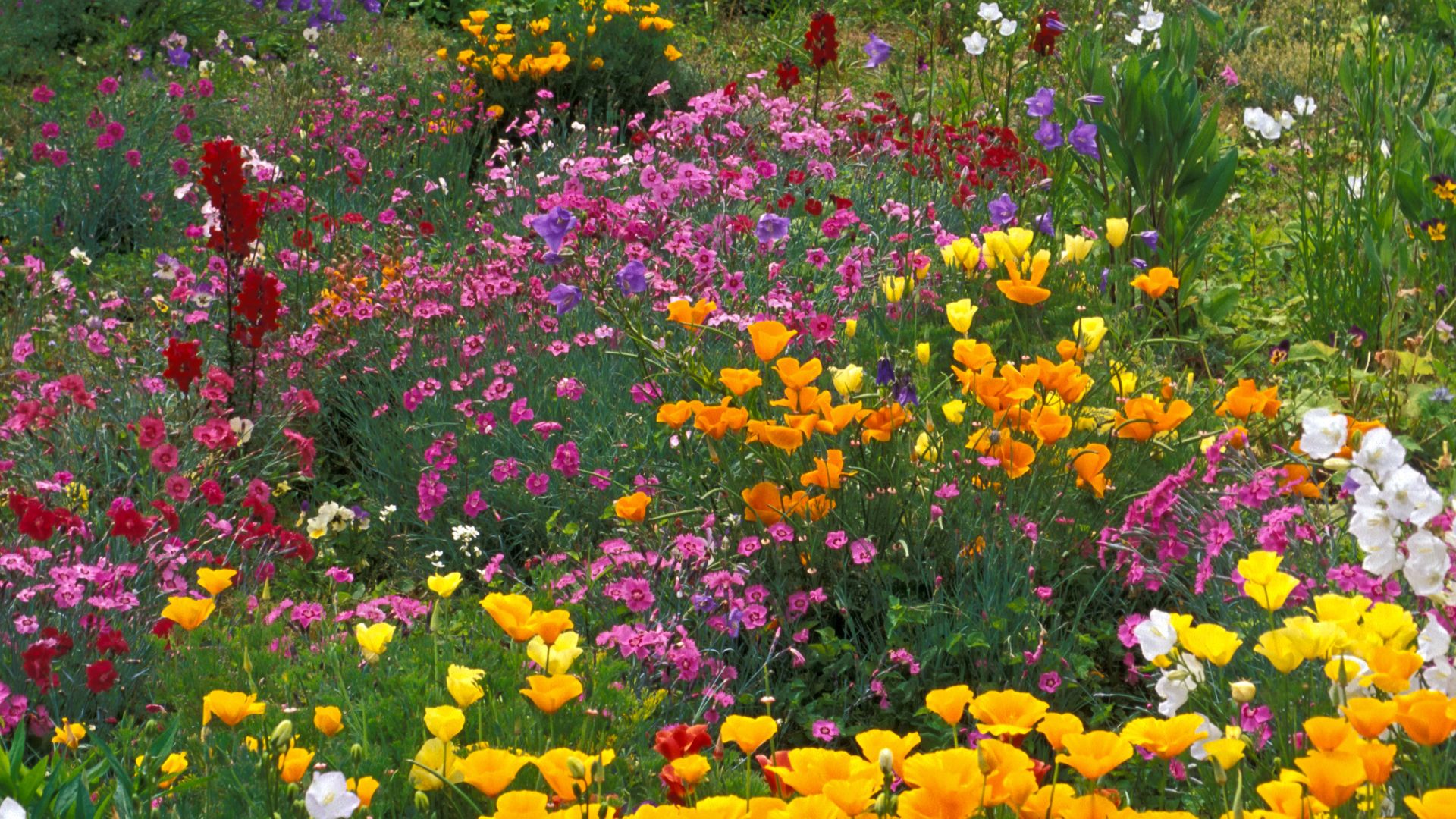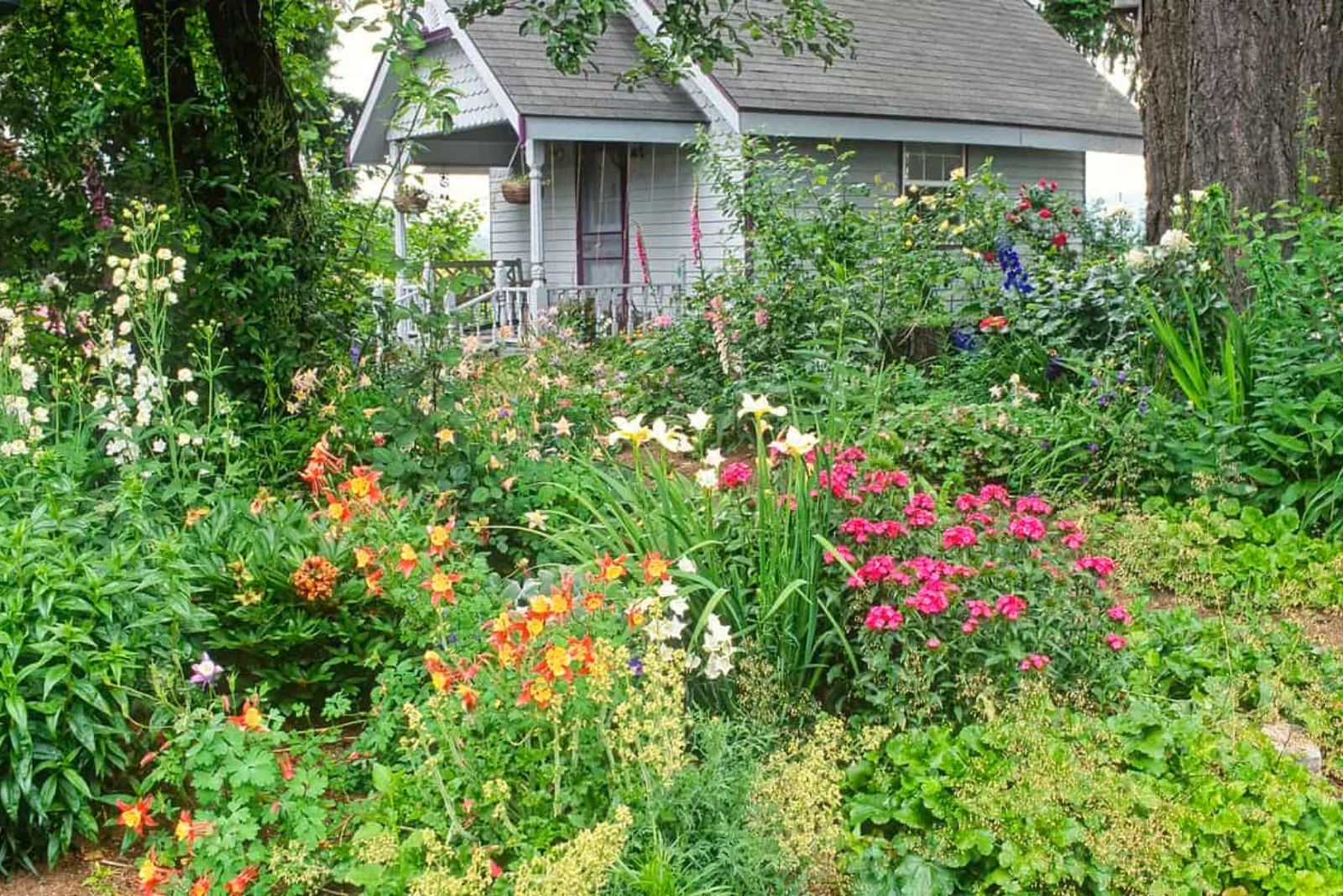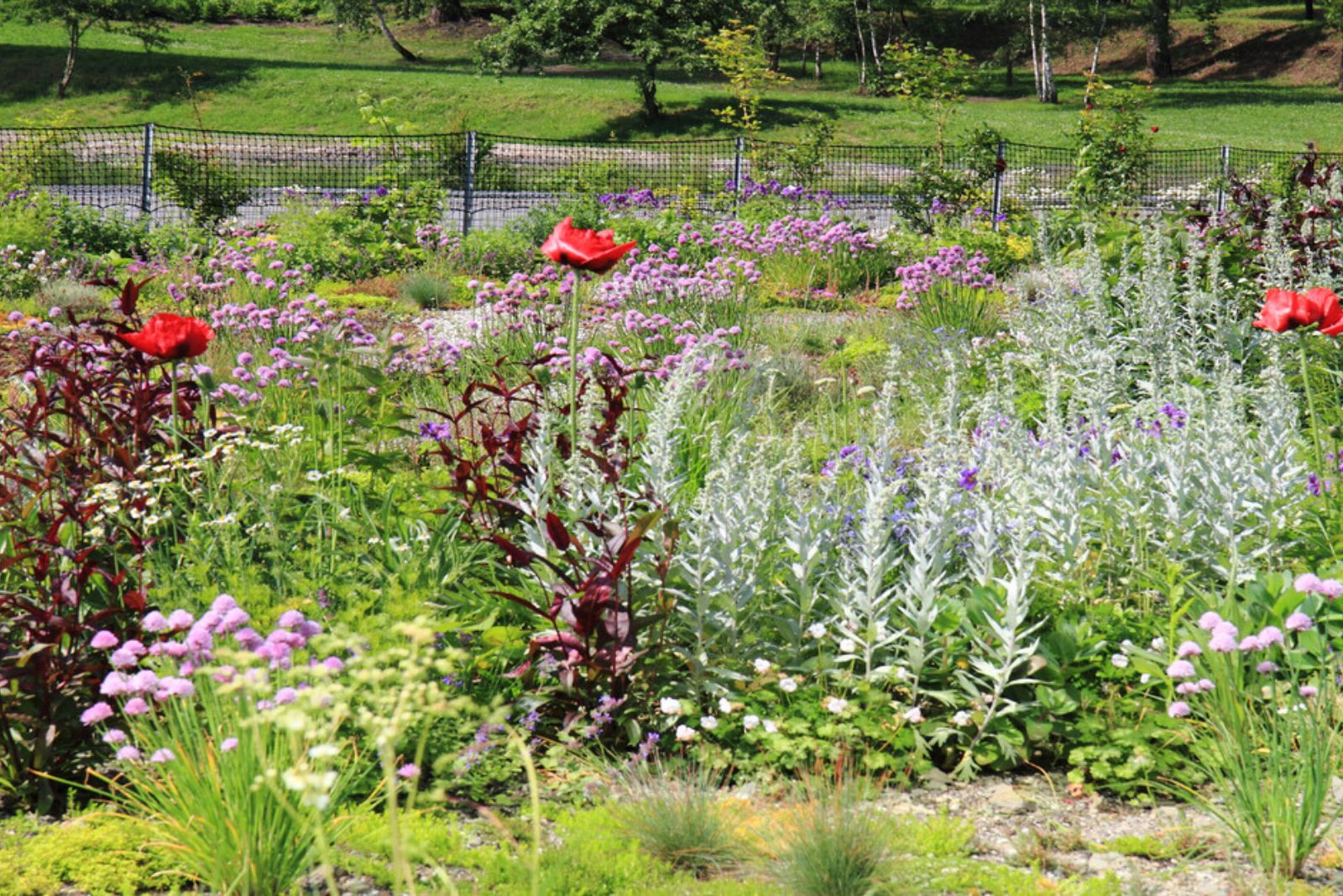We’re undoubtedly living in a world of chaos! Everything seems out of place and the harder we try to get things in order, the more complicated they become. This also applies to gardening and many beginners simply give up because they can’t keep up with all the ‘rules’ they must follow.
But what if I told you that there’s a gardening style that requires little to no maintenance and perfect arrangement is simply not necessary? I’m talking about chaos gardening, the latest trend that has gained a lot of attention due to its low requirements.
And guess what? You’ll still have a wonderful garden display that beneficial insects and pollinators will be crazy about!
Let’s find out everything!
Where To Start From
I believe I should start by telling you more about this garden style. Well, the word “chaos” actually explains everything.
Gather the seeds, scatter them around your garden, and witness the magic! You may think I’m exaggerating but this is what chaos gardening is all about.
There are no things such as choosing perfect plants, looking for their companions, or thinking of their arrangement in this way of gardening.
If you need to fill in the border area of your property or you just want to use the seeds you harvest at the end of the season, this is a perfect way to go.
Best of all, chaos gardening isn’t just about common flowering plants. Grasses, herbs, veggies, fruits, and wildflower plants; everything will work well.
You’ll get a beautiful garden with an enchanting scent and you’ll have a lot of pollinators and beneficial insects.
However, for the best results, I still recommend some planning in this chaos. I mean, not every plant thrives in the same conditions, no matter how low-maintenance it is.
You can, for instance, add this garden style to only some parts of your garden. That will give you an insight into how it works and if you want to expand it in the future.
Let’s start a chaos garden!
Planning A Chaos Garden
Here are some things you can and should do if you want to start a chaos garden.
Plan Zones
The main goal of this gardening style is to achieve the most natural look possible. However, you can employ this technique in some parts of your garden depending on what you want to get.
For instance, if you want to add texture, use plants with larger foliage to add a touch of drama, or choose small delicate foliage plants for a more subtle look.
When purchasing seed packs, I suggest choosing ones based on your preference. Honestly, using random packs of seeds and sowing them all in one zone may give you a ‘too wild look’.
Combining plants by considering height, spread, leaf texture, and color is the best method. You can also plant one pack of seeds in one zone of your garden and another pack in a different zone. This will create a stunning effect.
I also suggest you add self-seeding plants so that you put even less effort into your chaos garden the next season.
Plan A Garden Color Scheme
Nothing looks better than a garden color scheme. For example, combining red-flowering plants with plants that produce deep green foliage and white blossoms will result in a spectacular garden display.
You can also plant tall colorful flowering species and use them as a focal point. Add shorter plants with smaller blossoms around them and enjoy the view.
Add Hardscaping Features
Rock garden plants seem to be the perfect choice for this style. You can also add a few plants in containers or hanging baskets.
For me, the best chaos gardens are the ones with water features, i.e., small fountains or ponds.
Use Weeds
Wait, what? We’re all struggling to remove weeds from our gardens so why on earth would we plant them?!
Well, embrace the beauty of weeds; they’re part of nature and you won’t see a wild meadow free of them. Dandelions are inevitable flowering plants in gardens with a natural look!
Pros Of Chaos Gardening
The two main benefits of chaos gardens are their low-maintenance and ability to attract pollinators and beneficial insects.
Gardeners nowadays don’t have much time, so choosing high-maintenance plants will only bring trouble and disappointment.
Even if you have time, starting plants indoors and then transplanting seedlings outdoors isn’t as efficient as sowing the seeds directly in the ground.
Biodiversity is always welcome in the garden! It decreases the plants’ susceptibility to diseases, deters pests, and attracts the good guys, i.e., hummingbirds and butterflies.
What seems to be the problem then? Let’s see what else to consider.
The Drawbacks Of Chaos Gardening
Nothing is perfect in this world and the same goes for this garden style. Let’s see its disadvantages.
It’s Not Zero-maintenance
Let’s make one thing clear, little maintenance isn’t the same as zero maintenance. You’ll still have to put some effort into ensuring the best conditions for your plants.
Remember that chaos gardening isn’t rewilding gardens entirely. Once you introduce weeds to your garden, you know that they’ll start spreading uncontrollably, so monitoring their growth is crucial.
Even if some plants aren’t classified as weeds, they may have a spreading growth habit, so you’ll need to prune them now and then if you want to retain a textured and colorful garden appearance.
This is the main reason why I suggested some planning before starting a chaos garden.
Plant Needs Differ
Not every plant will thrive in the conditions in your garden. If a plant prefers free-draining soil and the soil in your garden is too compact, you’ll simply waste the seeds.
You’ll end up with ugly bare patches in your yard, and that’s the last thing a homeowner wants.
Watering May Be Tricky
Some plants need a lot of water to thrive while some plants show excellent tolerance to drought.
If you plant both types near, you can end up with overwatered or dehydrated plants and the main problem is that both conditions are detrimental to plant health.
However, if you decide on combining them, water them frequently but slightly.
It’s always better to prevent issues so simply choose plants with similar watering and soil requirements.
The Same Applies To Fertilizing
If you plant hungry plants, they’ll deplete all the nutrients from the soil and significantly affect the growth of other plants.
Constant monitoring and feeding with organic fertilizers may help you create a balance that will benefit all plant species.
But, again, growing plants with similar fertilizer needs will give you the best results.
Overcrowding May Create Issues
One of the most common problems growers face if they employ the chaos gardening technique, is overcrowding.
Bear in mind that there should be good airflow between plants to prevent fungal growth. Tall plants can block light sources, which results in poor growth of shorter plants.
The solution to this problem is regular inspection. If you notice some plants spread too much, prune them to enhance airflow and ensure enough light for all the other plants.
Veggies In Chaos Gardens
One of the frequent questions I get when it comes to chaos gardening is about planting veggies. I mentioned that all plants are welcome into this method but there are some things to consider.
I recommend planting annual vegetables and combining them with pest-repellent plants. This is referred to as companion planting in the gardening world and gives amazing results. Plants are less susceptible to pests, diseases, and potential growth issues.
Of course, first research which plants grow well together. Incompatible plants may give you the opposite effect and cause a bunch of unnecessary problems.
Our chaotic journey ends here. If you want to create a chaos garden, simply use the tips I gave you above and use all the benefits nature offers us!



